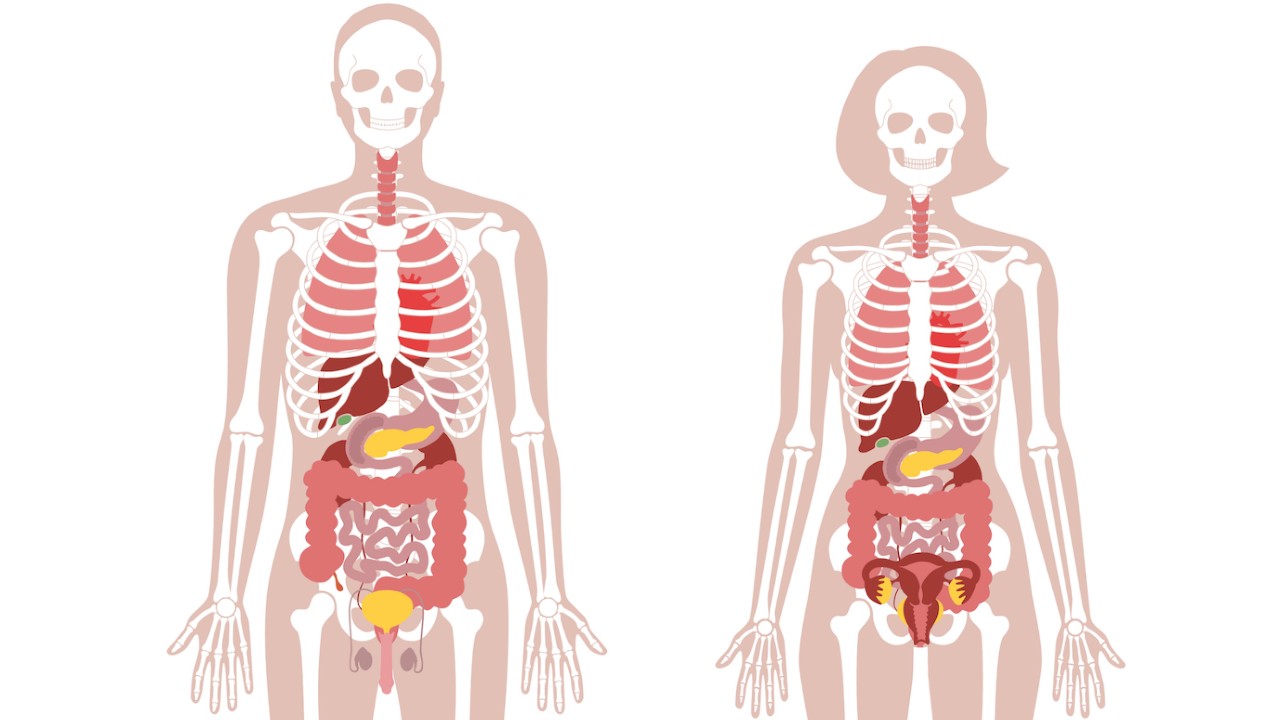We get energy for our daily activities from the food we eat. How is the food converted into energy? It is through the process called digestion. After we eat the food, waste products are removed from the body. The process involved in this is called excretion. We need oxygen to survive. Our body gets oxygen through the process, called respiration. These processes are carried out by different organs in our body. Different organs form the organ systems. In this lesson, we will study about different organ systems in our body and their functions.

Digestive System

The food we eat consists of complex compounds like carbohydrates, proteins, and fats. They have to be converted into simpler molecules like glucose, amino acids, fatty acids, and glycerol respectively. These simpler molecules are then assimilated either by blood or lymph in order to give us energy. The process of conversion of complex food molecules into simpler molecules is called digestion.
The digestive system can be divided into two.
1. Digestive tract 2. Digestive glands
Digestive tract (Alimentary canal)
It is a coiled muscular tube extending from the mouth to the anus. It is about 6-9 metres long and consists of many specialized divisions. Arranged sequentially, these are the mouth, buccal cavity, pharynx, esophagus, stomach, small intestine, large intestine, rectum, and anus.
Digestive glands
Three important digestive glands associated with the process of digestion are:
1. Salivary glands
2. Pancreas
3. Liver
Salivary glands secrete saliva which moistens food. Saliva contains enzymes that break down complex starch into simple carbohydrate molecules. The pancreas produces pancreatic juice which contains digestive enzymes for digesting fats, proteins, and carbohydrates. The liver produces bile for the digestion of fat.
Respiratory System

The respiratory system provides oxygen to the tissues of the body and removes carbon dioxide from the tissues. There are three major parts forming the respiratory system.
1. Airway 2. Lungs 3. Muscles of respiration
1 Airway
The airway includes the nasal cavity, pharynx, larynx, trachea, bronchi, and lungs. It carries air between the lungs and the surrounding.
2 The lungs
The lungs are the primary organs of the respiratory system. They are paired cone-shaped organs. They are located near the backbone on both sides of the heart.
3 Muscles of respiration
include diaphragm and intercostal muscles. They act as pumps and push the air into and out of the lungs during breathing. Muscles of respiration
Circulatory System
/circulatory_system-56e73fe45f9b5854a9f962fc.jpg)
In this system, blood is circulated to transport oxygen and nutrients to every part of the body. The circulatory system consists of the following:
1. Heart 2. Blood 3. Blood vessels
1 Heart
The heart is a hollow, muscular organ. It is somewhat conical in shape. It is covered with a double-walled membrane called the pericardium. The space between the membranes is filled with pericardial fluid. The pericardial fluid protects the heart from shock. The heart is placed inside the thoracic chamber (rib cage) in between the two lungs.
The heart is divided into four chambers. Two upper chambers are called atria or auricles (Singular-atrium). Two lower thicker chambers are called ventricles. The upper and lower chambers of the heart are separated by a muscular wall or tissue known as the auriculo-ventricular septum of the heart. The right side of the heart receives deoxygenated blood from various parts of the body and pumps it to the lungs for oxygenation. The left side of the heart receives oxygenated blood from the lungs and pumps it into different parts of the body.
2 Blood
Blood transports nutrients, oxygen, wastes and hormones. The volume of blood in human adults is 4-5 liters. It regulates water level and body temperature. Blood is pumped throughout the body by the heart. It takes oxygen to tissues and cells and finally reaches the lungs to take oxygen again.
3 Blood vessels
Blood vessels consist of arteries and veins. Arteries carry oxygenated blood (except the pulmonary artery which carries deoxygenated blood from the heart) and veins carry deoxygenated blood (except the pulmonary vein which carries oxygenated blood to the heart).


You must be logged in to post a comment.